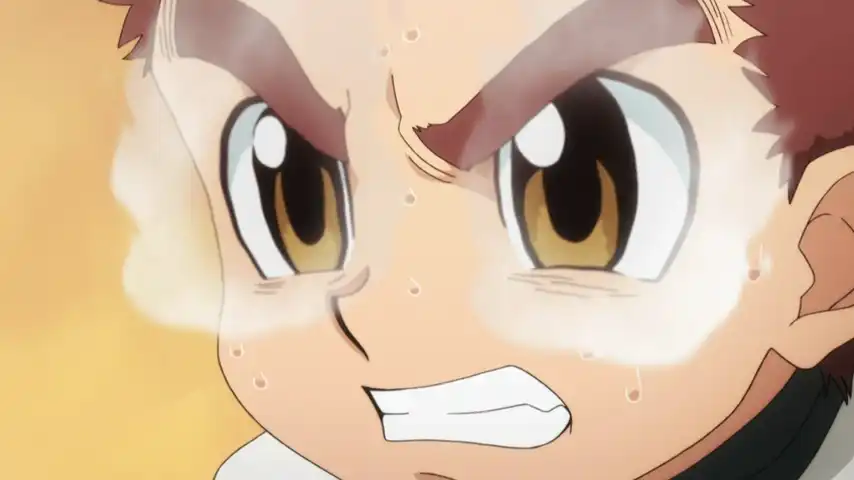
In Hunter X Hunter, Gyo is the technique for focusing your Nen in a particular part of your body. For example, you might focus your Nen in your fist to punch harder, or your feet and legs to jump higher. This comes with a risk– you only have so much Nen, so by focusing it in part of your body, you leave the rest undefended.
In Improv, Gyo is focus. You can only pay so much attention– what are you spending it on? Are you focusing on your voice? Your posture? Your emotion? It’s hard to do all of them at once, especially early on. Which one will take you the farthest in your scene?
You may have already been taught Gyo. There’s a common exercise where the teacher has the class walk around the room, and they call out different body parts, and the students “lead” with that body part. The teacher says “hands!”, and the students walk around while grasping forward like rats, or wringing their hands nervously. The teacher says “hips!” and the students walk around like gross frat boys, or swaggering pirates, jutting their waists forward as they take wide steps.
This is Gyo! The heroes in Hunter X Hunter do the exact same exercise with their teacher. A little can go a long way. Pay a tiny bit more attention to your feet, and the audience sees you as someone else. We’ll discuss this more when we get to Ken and Ryu.
There is one more application of Gyo, more essential than all the rest. In Hunter X Hunter, characters learn to use Gyo to focus their Nen on their eyes, allowing them to see Nen.

In Improv, this means seeing what people are paying attention to. Seeing like an improviser. Gyo allows you to look beyond the words and the blocking, to directly perceive the intent of your scene partner. When the voice in your head says, my scene partner is going for something- that’s Gyo.
You may have heard the advice, “Say yes to your scene partner, not their character.” Suppose you’re in a scene at an office, your scene partner is playing your boss. They say, “Please stop pouring Red Bull in the office plants to make them grow faster.” If you listen to their character, you stop pouring Red Bull in the plants, and the fun ends. But with Gyo, you see, my scene partner is directing more attention towards watering plants with Red Bull. In Yen terms, you use Gyo to see that your scene partner is blasting more of their aura into the imaginary potted plants and cans of Red Bull in the scene for you to use in your Hatsu, to get a bigger laugh. With Gyo, you know you have to pour more Red Bull in those plants!
This is why the UCB practice of “framing the game” is a Gyo technique. It’s not introducing a new idea. It’s directing focus to an idea already onstage.
It takes a lot of training and experience to be able to effectively use Gyo on someone you’ve never improvised with before. On the other hand, when you’ve improvised with someone for a long time, your Gyo becomes so second-nature, you feel like you have a sixth sense for what moves they might make next.
You can jump-start this process by explicitly setting shared expectations for your scenes. Instead of having to look at every little thing with Gyo, you agree to pay special attention to certain features of the scene. The “styles” of different theaters are almost entirely dictated by the set of shared expectations they teach their performers.
Here are a few that almost all theaters share:
The first to enter is the first to speak.
If my scene partner repeats an offer, they want to explore that idea further.
If my scene partner gets tagged out, my new scene partner wants me to keep not just my character, but also my attitude and my point of view.
Improv runs on shared expectations. Making up good scenes with people on-the-spot is hard, and it would be unwatchable if we didn’t have a secret language we can use to get ahead of the audience. Any improv you watch where it looks like the players are reading each other’s minds, they either have a set of shared expectations that you haven’t learned, or they’re using them too subtly for you to see.
What does a UCB-style Harold look like to someone who's never heard of it?
This show is completely made up, but everyone knows who should be in which scene, instantly and with no effort. In each scene, the players suddenly all start building the same joke at the same time. At the end, everyone starts walking into each other's scenes, and nobody is surprised.
We know that the structure of the show is premeditated. Everybody onstage has a shared expectation of the order and composition of scenes, and a shared expectation that each scene will be about discovering and playing the game. But if you don’t know how the trick is done, it’s quite impressive. If you do, it’s only impressive to they degree that their In is better than your Gyo.